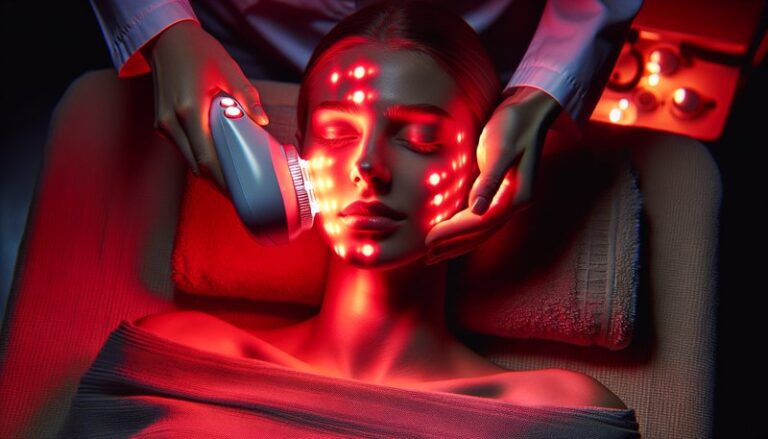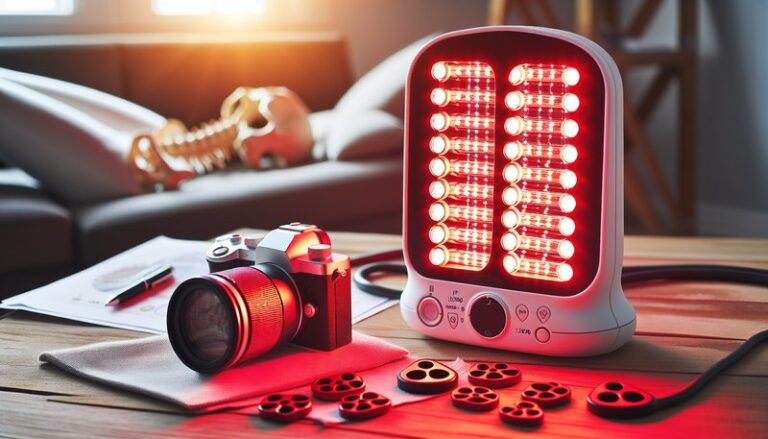What Are The Dangers Of Red Light Therapy?
Are you considering using red light therapy for its touted benefits? While it has gained popularity for various uses, it’s essential to understand the potential dangers and risks that come with this treatment.
This article will explore the potential dangers of red light therapy, aiming to provide a balanced view of its risks against its advantages. Readers will gain insight into what to consider before engaging in this therapy and learn about alternatives if needed.
Check out the full post Daily Use of Red Light Therapy?
Key Takeaways
- Red light therapy can cause skin issues or eye damage if not used correctly.
- Users should be cautious about existing health conditions or medications that may interact negatively with this therapy.
- Proper guidance and consultation with a healthcare professional are crucial to ensure safe use.
What is Red Light Therapy?
Red light therapy (RLT) is a non-invasive treatment that uses low-level wavelengths of red light to promote healing, reduce inflammation, and improve skin health. Typically administered using LED devices, this therapy is marketed for various health benefits ranging from acne treatment to pain relief and even anti-aging effects.
Mechanism of Action
Red light therapy works by stimulating the mitochondria in cells, leading to increased ATP (adenosine triphosphate) production, promoting cell repair, and reducing oxidative stress. These properties are what make RLT appealing for both medical and cosmetic uses.
Get the full picture in Does Red Light Therapy Help Neuropathy?
What are the Benefits of Red Light Therapy?
While this article focuses on the dangers of red light therapy, it is essential to acknowledge its benefits, including:
Pain Relief
Many users report significant reductions in chronic pain conditions, such as arthritis and muscle soreness, due to the anti-inflammatory effects of RLT.
Improvement in Skin Conditions
Red light therapy is known for its potential to reduce acne, minimize wrinkles, and promote wound healing, making it a popular choice for skincare routines.
Enhanced Athletic Recovery
Athletes are increasingly adopting RLT as a method to expedite recovery from injuries and enhance performance by reducing inflammation.
Is it Possible to Use Red Light Therapy Safely?
Using red light therapy can be safe with the right guidance. However, like any treatment, there are risks.
What are the Advantages of Proper Usage?
Appropriate application ensures:
- Increased Effectiveness: Proper devices and wavelengths enhance therapeutic results.
- Reduced Side Effects: Following guidelines minimizes the risk of adverse reactions.
- Personalized Treatment: Consulting professionals allows for tailored therapies based on individual needs.
What are the Disadvantages of Improper Usage?
Without close adherence to safety practices, users may experience:
- Skin Damage: Overexposure can lead to long-term skin issues, including burns.
- Eye Injury: Direct exposure to light without protection can harm the eyes, potentially leading to vision problems.
- Efficacy Issues: Incorrect usage can lead to minimal or no benefits from the therapy.
What are the Things to Consider Before Starting Red Light Therapy?
Prior to beginning red light therapy, consider the following:
Health Conditions
Individuals with certain conditions, such as skin cancer or epilepsy, should consult a healthcare professional before using RLT, as it may exacerbate their conditions.
Sensitivity to Light
If you have a history of light sensitivity or are on medications that increase sensitivity, it’s crucial to evaluate whether RLT is safe for you.
Device Quality
Not all red light therapy devices are created equal. Researching the quality, intensity, and wavelength of the device is essential for ensuring safety and efficacy.
What are the Alternatives to Red Light Therapy?
If you are concerned about the potential risks of red light therapy, several alternatives may offer similar benefits:
Cold Laser Therapy
Also known as low-level laser therapy, this method utilizes a different wavelength and is known for promoting healing and reducing inflammation without the risks associated with red light therapy.
Infrared Sauna Therapy
Using infrared heat can provide similar benefits, such as improved circulation and pain relief, without direct light exposure.
Topical Treatments
For skin conditions, consider using topical creams or treatments that may provide targeted relief with fewer risks of side effects associated with light therapy.
Conclusion: Is it Recommended to Use Red Light Therapy?
Red light therapy offers a range of potential benefits, but it is not without its dangers. Ensuring safety through proper usage, consulting healthcare professionals, and considering individual health conditions is crucial. Weighing these factors will help you make an informed decision about whether this therapy is suitable for you.
Frequently Asked Questions
Is red light therapy safe for everyone?
While many can safely use red light therapy, individuals with certain medical conditions or those sensitive to light may face risks, making it essential to seek advice from a healthcare provider.
How often should I use red light therapy for optimal results?
The frequency of use can vary based on individual needs and the reason for treatment. It’s advisable to start with prescribed sessions and adjust according to your body’s response.
What are the signs of overexposure to red light therapy?
Signs may include redness, irritation, burns, or any unusual skin changes. If you experience such symptoms, it’s best to discontinue use and consult a professional.
Are there any long-term effects of using red light therapy?
Research is ongoing, but overexposure has the potential for long-term skin damage. A cautious approach can help mitigate these risks.
Can I use red light therapy at home safely?
Using home devices can be safe if you choose quality products, adhere to usage guidelines, and remain informed about potential risks. Always consult with a healthcare professional for tailored advice.





